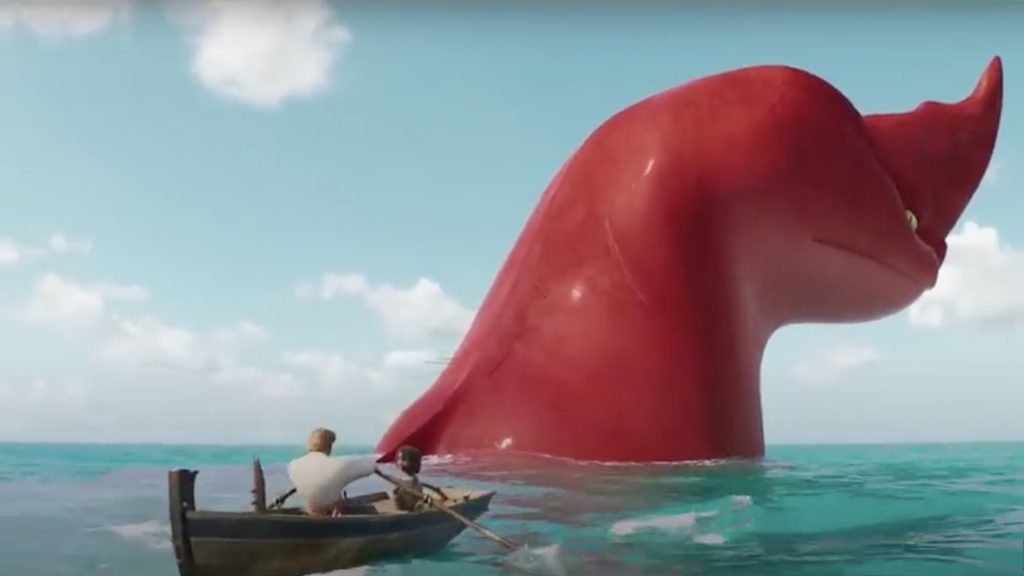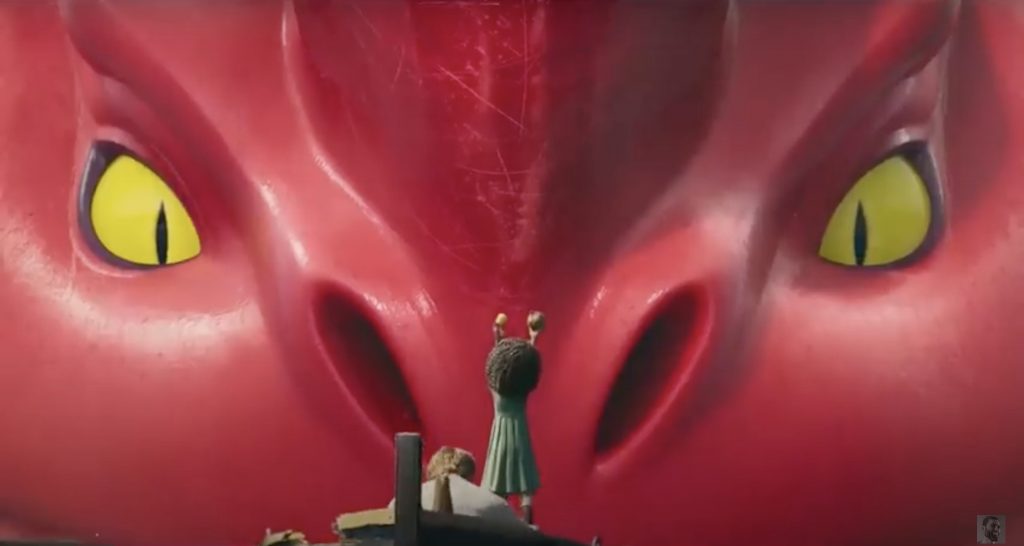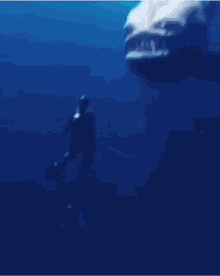Chris Williams’ Netflix movie The Sea Beast is a film which follows the generational indoctrination of a society, in which the ruling classes have fabricated a war against sea beasts in order to maintain their power and control of humans and animals alike. In this scene however, the human/animal relationship of mistrust and antagonism begins to break down, and the hostility created from myths and legends is transgressed, allowing a new type of relationship surrounding hope and an end to animal hunting to be formed.

The initial boundary between humans and animals is represented by the positioning of Red at a distance from Maisie, signifying the literal and metaphorical space that has been created by the war against beasts, and their wariness of each other as a result. It is only when Maisie attempts to communicate with Red that this boundary begins to decrease, blurring the preconceived idea of hostility. The subsequent shot as Red closes this gap is striking as her face suddenly consumes the entire frame. This angle not only emphasises her size and power in contrast to the tiny humans, but also the importance of choice. Not only does Red have the option whether to overturn the boat or not, this choice is more than saving humans: she is choosing whether to stick with the other beasts and continue to attack humans, or branch out as an individual, taking the risk in order to protect her own species now and in the future. This moment also highlights the fact that Red is simply showing the humans that she has the capacity to choose – she is not mindless or unintelligent. This is also the first moment in the film where the humans have no choice whatsoever. Jacob represents the indoctrinated humans, and without this lack of choice is seems clear that he would never have trusted Red to save their lives. As this scene continues, there is an uncomfortably long moment of eye contact between red, the humans, and even the viewer which creates an ambiguous moment of tension, during which the outcome could either be transgressive or catastrophic. Sometimes eye-contact with an animal can be seen as a threat, yet is can also be seen as a means of both communication and connection. In this case, Red’s eventual choice allows the relationship between humans and animals to develop.


Following this tense moment, Red again engulfs the shot, this time changing the colour of the water from a gentle blue to a vivid red. The viewer is purposefully drawn to her bright complexion, highlighting the importance of colour in this scene and its connotations. Often, an archetypal, red-coded character is villainous, and the colour itself is representative of a warning or danger. Despite this, Red defies these expectations, instead revealing herself as gentle and kind by saving Maisie and Jacob. Furthermore, her colour is her main attribute, with the rest of her character design seeming simplified in comparison to that of the humans. This animation choice alludes to how humans can’t see past her ‘evil’ colour and size, which is what ultimately makes her a beast. As a result of their indoctrination, the humans have become passive and lacking curiosity, so instead of scientifically exploring or analysing these animals, all they have are assumptions. Much As a result of these assumptions, the humans have developed a fear of the unknown, of what is lurking in the deep and therefore their only way of controlling it is by killing it. The rulers of this country refused to look weak and wanted to maintain this power, thus presenting the beasts in this terrifying light.

The beasts, in actuality, represent freedom and a new undiscovered side to the world, suggesting that social change can only happen if humans expand their mind and go out of their way to discover the truth, rather than just viewing these animals as big colourful beings with teeth. This simplification of red also highlights why Williams’ chose to use these animals to represent and begin social change. Unlike other animated animal movies, these ‘beasts’ do not have the ability to talk. In a society which is founded from legend and people spreading stories, humans have only learnt to listen to what they are told, rather than looking and trying to ‘see’ rather than ‘hear’ the truth which is right in front of them. It is up to these humans to decipher the motivations and thoughts of these animals, forcing them to think rather than listen to the crowd for the first time in their life. At the very end of this scene Maisie epitomises this idea, saying that “the world is wide, and you don’t know everything”. Just because something has not been explore based upon human folly doesn’t necessarily make it a threat, nor should it be something to control.
Following Red’s decision to save them, Jacob again is a symbol of scepticism, still believing Red might have considered eating them: “just be glad she didn’t eat us”. He struggles to find this creativity and new thought to create his own perspectives, rather than relying on the myths that he has always been told. He only begins to believe that the beasts are friendly right at the end of this scene, when it becomes obvious, rather than earlier on where he is given the opportunity to think past what he already knows. Maisie, alternatively, represents change and is unassuming, attempting to communicate and patiently allowing Red to demonstrate her true self through her actions, rather than it being dictated by someone else. She is young, not yet tainted by the indoctrination that engulfs her society, and thus her innocence allows her to be brave in the face of such a huge animal. Maisie describes Red as “more than a beast”, emphasising the importance of establishing a bond between humans and animal in order to truly understand them. Red also mirrors Maisie: they are both outliers in their specific worlds who have an individual thought and have the confidence to make a decision outside of the ‘norm’. It is this animal which allows the humans to reject their received wisdom and swap it for their own.

The fact that Red also allows herself to become a ‘vessel’ to carry these humans home is highly significant: she has merged their worlds together, becoming their boat and safe space but also trusting them to not harm her. As this scene commences the tone therefore shifts massively: hopeful music plays in the background and the camera pans out to a birds-eye view, alongside birds flying gently. Nature is finally at balance as a result of this boundary being transgressed. This very end shot thus epitomises the new relationship and how the false myth of antagonism has been defeated.